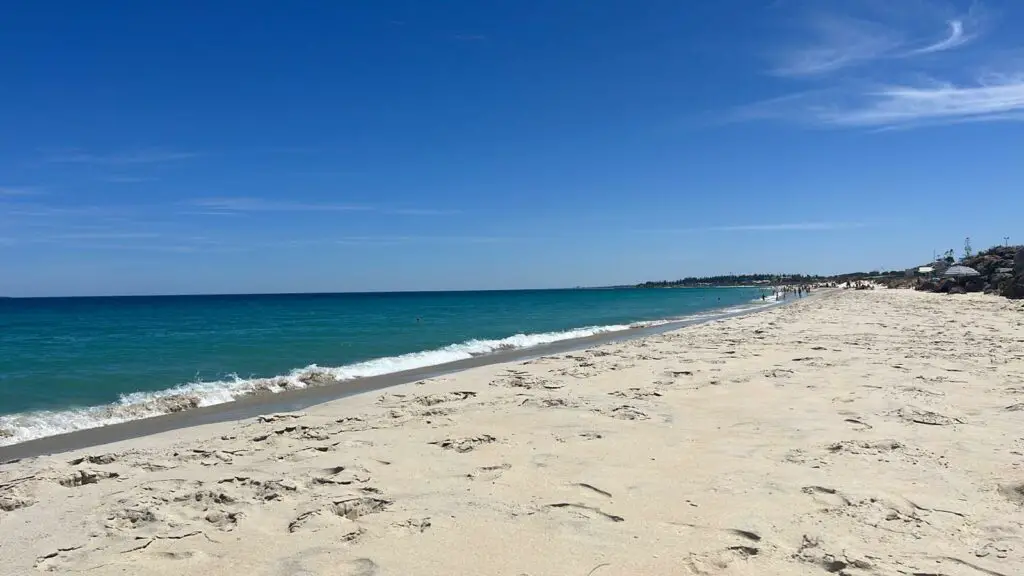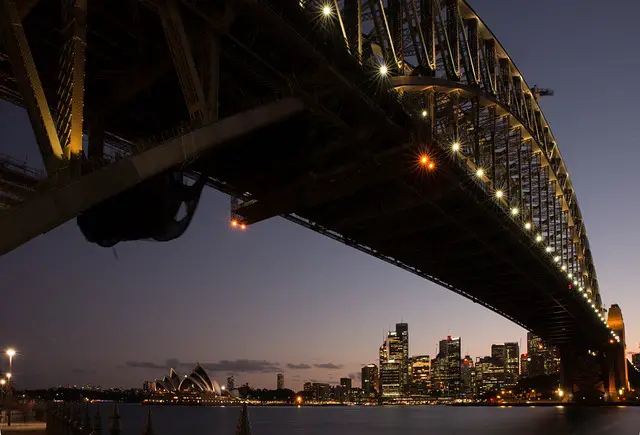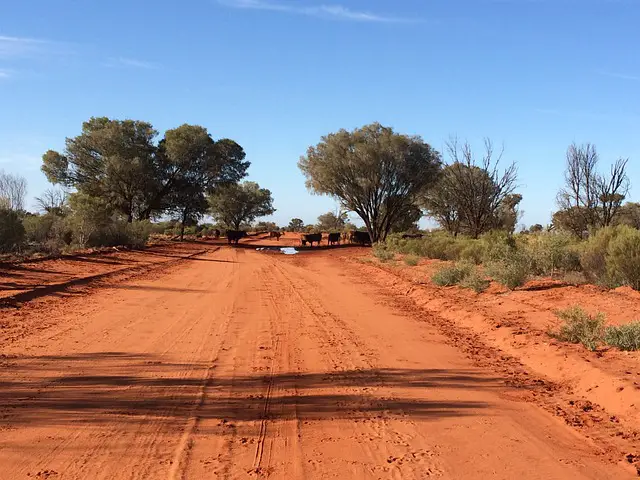
Australia, the driest continent on Earth relies on desalination to support larger cities and regional centres, particularly in the long dry summers. The scale of the desalination facilities got me thinking, how big are these facilities and what sort of populations do they support? I looked into it and came up with this list of the 10 largest desalination facilities in Australia, you would be surprised how many privately owned installations make the top 10!
Desalination plants in Australia are generally state-owned and focused on our capital cities, with the top four located in Melbourne, Adelaide, Perth and Sydney respectively. Interestingly, four of the ten largest facilities are actually privately owned and service natural resources projects in Western Australia.
1. Victorian Desalination Plant: 410,000 m³/day
Also known as the Wonthaggi Desalination Plant, the Victorian Desalination plant is located in Dalyston, around 100km southeast of Melbourne. Completed in 2012, the Wonthaggi Desalination Plant has the ability to provide water for 33% of Melbourne’s nearly 5 million inhabitants. The facility is composed entirely of reverse osmosis desalination modules, utilizing the higher energy efficiency of the process. Somewhat controversial, the desalination plant was immediately put into standby after its initial commissioning due to Melbourne’s main water sources being at 81% capacity and not requiring any additional water. Due to the relatively unpredictable nature of Melbourne’s rainfall, the desalination plant forms a part of Melbourne’s water management plan, particularly in times of prolonged drought, similar to what occurred when construction began on the facility in 2007. For a more in-depth look at this particular facility, I encourage you to take a look at my article The Victorian Desalination Plant: 7 Things You Need To Know.
The Victorian Desalination Plan is big, but it still does not make the list of The 10 Largest Desalination Plants In The World! If you are interested in seeing the scale of desalination that happens around the world, I encourage you to give the article a read.
2. Adelaide Desalination Plant: 300,000 m³/day
Coming in at 2nd place, the Adelaide desalination plant is located in Lonsdale, around 20km south of central Adelaide. Completed in December 2012, the Adelaide Desalination Plant is made up entirely of reverse-osmosis modules and has the ability to provide water for 50% of Adelaide’s 1.4 million residents. Similar to the Victorian Desalination Plant, The Adelaide Desalination plant has been operating at reduced capacity since 2015, two years after it was commissioned in 2012, this is due to Adelaide’s natural water sources being able to keep up with demand. The desalination plant forms more of a contingency plan in times of extended drought when it will rely upon to make up any gap in supply from the Murray-Darling River system.
3. Southern Seawater Desalination Plant: 270,000 m³/day
The bigger of two large-scale desalination facilities in Western Australia, The Southern Seawater Desalination Plant is located near Binningup, approximately 130km south of Perth. After finishing construction in 2011, the Southern Seawater Desalination Plant had the capacity to cater for 30% of Perth’s freshwater requirements via reverse-osmosis of seawater from the Indian Ocean. Unlike first and second place on this list, Perth is reliant on the Southern Seawater Desalination Plant for its water supply as decreasing rainfalls have led to lower water levels in natural water sources.
4. Sydney Desalination Plant: 250,000 m³/day

Located in Kurnell, approximately 20km south of central Sydney, the Sydney desalination plant has the ability to provide approximately 15% of Sydney’s freshwater requirements. Utilizing reverse osmosis, the Sydney Desalination Plant has the ability to produce 250,000 cubic metres of water per day. The Sydney desalination plant is not required to continuously produce water at full capacity. The plant only starts operating above maintenance levels once Sydney’s water sources drop below 60% and will continue in operation until the water supply reaches 70% again, it exists as a contingency measure for severe drought.
5. Cape Preston (Sino Iron Project): 140,000 m³/day
Located in Cape Preston in Northern Western Australia, the desalination plant was built in order to service the Sinosteel Iron Ore Mine in the area. Capable of producing 140 thousand cubic metres of water per day, this facility is the largest privately owned desalination plant in Australia. Operating using 100% reverse osmosis, the desalination project was initiated purely to service the processing needs of the iron ore mine nearby, the largest magnetite-producing mine in Australia.
6. Perth Seawater Desalination Plant: 137,000 m³/day
The smaller of the two desalination plants supplying Perth with fresh water, the Perth Seawater Desalination Plant is located near Kwinana, approximately 30km south of Perth. Starting operations in 2006, the plant uses reverse osmosis to produce 137 thousand cubic metres of water every day.
7. Gold Coast Desalination Plant: 133,000 m³/day
Located in Bilinga, a beachside suburb of the Gold Coast in Western Australia, the Gold Coast Desalination Plant provides 133,000 cubic metres of water daily to the gold coast. Starting operations in 2009, the facility utilizes reverse osmosis to provide freshwater to the surrounding area. Like many facilities on this list, the Gold Coast Desalination Plant does not continuously operate at 100%, generally operating in standby mode at 33% of full capacity, only operating at max outputs in times of drought.
8. Roy Hill Iron Ore Mine: 20,000 m³/day

Located approximately 115km north of Newman in Western Australia, the Roy Hill Iron Ore Mine has an in-house desalination plant capable of producing 20 thousand cubic metres daily. Commissioned in 2019, the plant uses reverse osmosis technology to provide fresh water for the processing of iron ore and the needs of the workers living on site.
9. Barrow Island (Gorgon gas project): 7000 m³/day
Similar to the Sinosteel operation near Cape Preston, the Barrow Island desalination plant was built to provide fresh water for the demands of the Gorgon Gas Project and its workers. Located in the north of Western Australia, the Barrow Island Desalination Plant uses reverse osmosis technology to desalinate 7 thousand cubic metres of seawater daily.
10. Onslow (Wheatstone gas project): 6000 m³/day
Almost identical to the Barrow island facility in size, technology and usage, the Wheatstone desalination plant is located near Onslow in the north of Western Australia. Starting production in 2018, the Wheatstone desalination plant uses reverse osmosis technology to produce 6 thousand cubic metres of fresh water daily.
https://osmoflo.com/case-studies/gorgon-lng
https://www.melbournewater.com.au/water-and-environment/water-management/water-quality/water-treatment/desalination#:~:text=The%20Victorian%20Desalination%20Plant%20plays,quality%20drinking%20water%20a%20year.
abc.net.au/worldtoday/content/2012/s3656791.htm
https://www.sawater.com.au/water-and-the-environment/south-australias-water-sources/seawater#:~:text=The%20Adelaide%20Desalination%20Plant%20at,of%20100%20gigalitres%20per%20year.
https://www.epa.sa.gov.au/environmental_info/water_quality/water_quality_monitoring/adelaide_desalination_plant
https://ausenco.com/projects/providing-reliable-water-supplies/
sydneydesal.com.au/faqs/
watercorporation.com.au/Our-water/Desalination/Southern-Seawater-Desalination-Plant
https://citicpacificmining.com/our-operation
https://www.seqwater.com.au/sites/default/files/2019-08/2017%20Fact%20sheet%20Gold%20Coast%20Desalination%20Plant.pdf
watercorporation.com.au/Our-water/Desalination/Perth-Seawater-Desalination-Plant
osmoflo.com/case-studies/roy-hill-mining
osmoflo.com/case-studies/gorgon-lng
ertech.com.au/projects/wheatstone-project/#:~:text=Operation and Maintenance Works%3A&text=Desalination plants – capable of producing 6M L of fresh water per day

